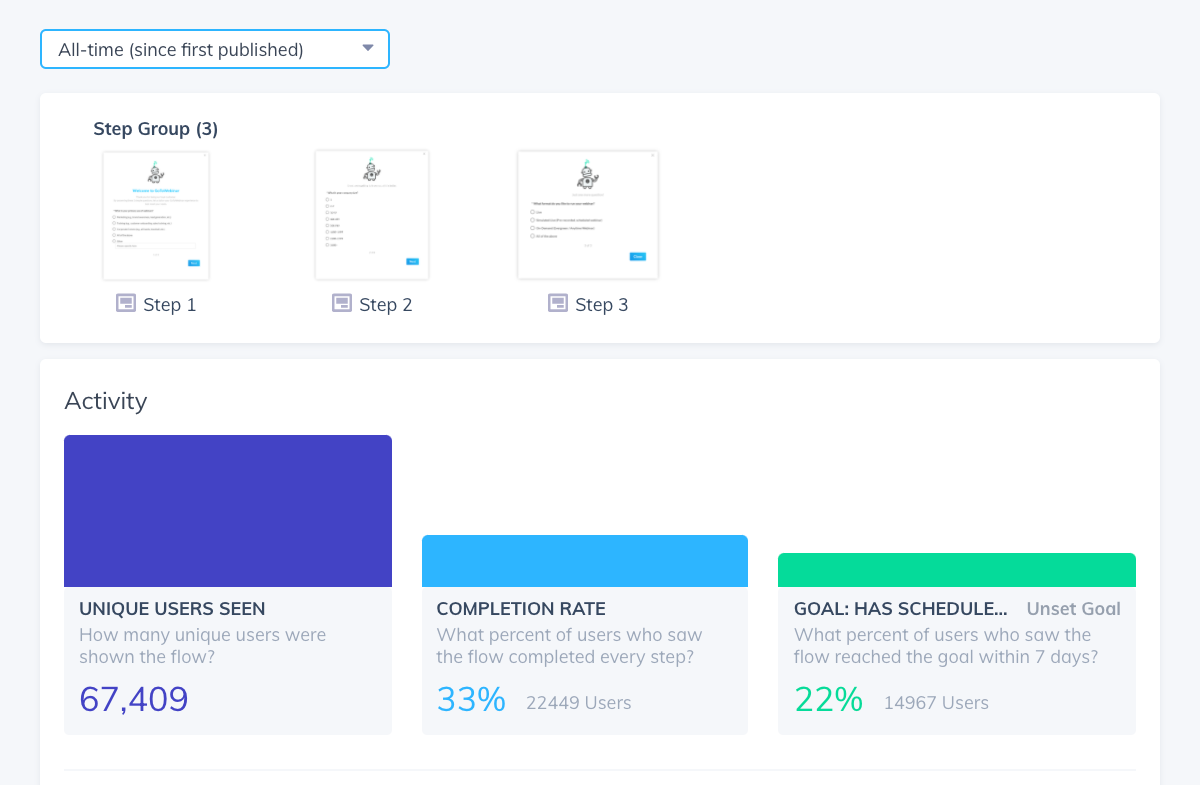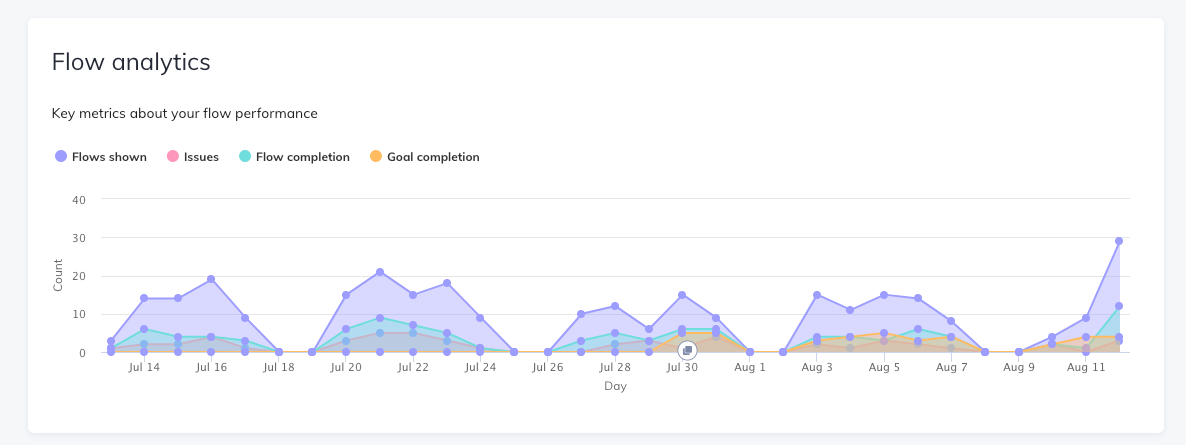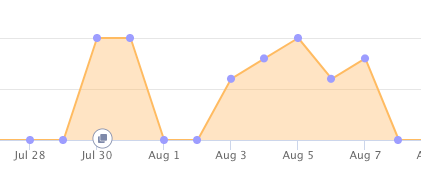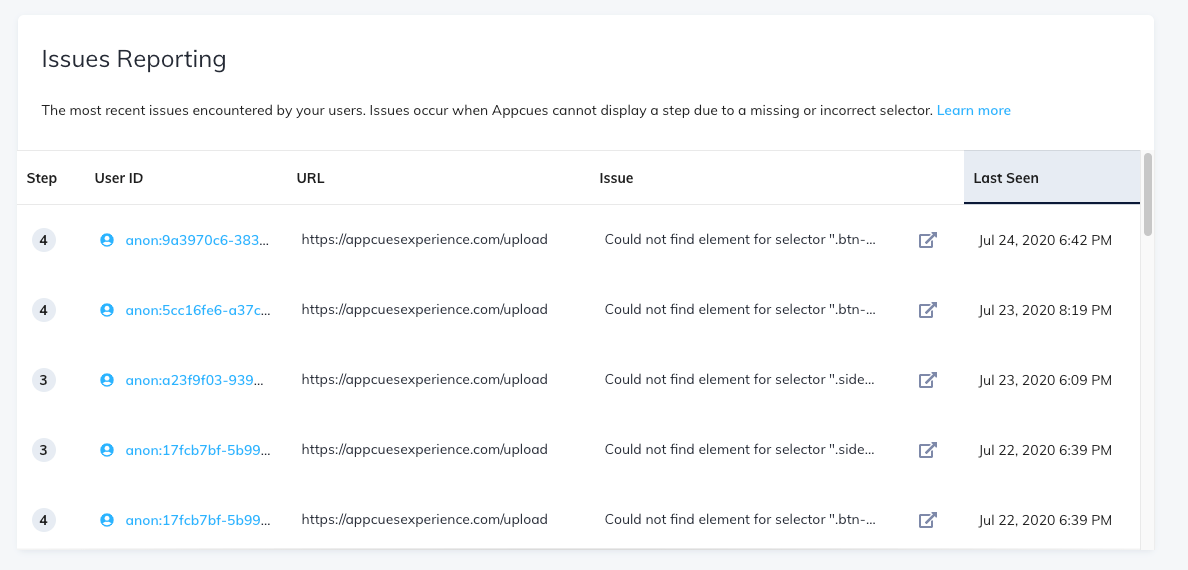Introducing: New and improved Flow Analytics

.png)

.png)
Before I was a product manager here at Appcues, I was a customer success manager. As a CSM, I acted as a strategic partner for our customers, helping them to identify and achieve their goals.
One of the biggest challenges I faced in that capacity was showing customers the quantitative impact of their efforts. That’s because our product analytics were limited, and often gave you just enough data to leave you with more questions than you started with. Our analytics page was bound by versions, which showed simple data points, sliced the data in a (frankly) unhelpful way, and provided no indicators of how a flow was helping to drive engagement.
In other words, our analytics needed a lot of work.
As a PM who talks to customers weekly, I knew this was a major pain point for our customers.

So, we decided to overhaul the page.
Over the past 3 months, our design, engineering, and product teams worked cross-functionally to design (and re-design), test, and build a new analytics page that we are beyond excited about.
Before we jump into the big reveal, a few words about our validation process:
To dogfood the new analytics, we enabled the redesigned feature for our internal account and started using it. I was immediately able to identify broken flows that needed fixing, daily interactions with our content, and successful flows driving product engagement. I was elated at what I was able to gain from the new page and couldn’t wait to get more customers using it.
As the next step in our process, we released the new version to 80 customers in our Early Access program— a group of beta-friendly users who want the latest and greatest, and love giving feedback.
While the response was overwhelmingly positive, there was one consistent piece of feedback all users had: they needed more information and more details around a newly added data point on the page (Issues) and without it they were extremely confused.
Whenever the Appcues product team takes on a new piece of work, we always aim to build a SLC (slick) product: Simple, Lovable, Complete. The feedback we got from our Early Access users revleaved the feature wasn’t yet “complete;” it needed more work in order for our customers to adopt and use it regularly.
After addressing this feedback and a few new additions, we are ready to share our new analytics page with customers—and we couldn’t be more excited!
Based on the feedback from our Early Release program, we feel confident that our new analytics page does what we set out to do: Allow customers to better understand the engagement of their flows.
Some of my favorite components of the new Flow Analytics are:
The Flow Analytics graph: This enables you to see key data points—such as Flows Shown, Issues, Completion and Goal achievement—over time. This allows you to better understand historical patterns of performance and engagement.

Version annotations: We added version annotations to the Flow Analytics graph to help you understand the impact your changes have on performance.

The step breakdown: This chart gives you deeper insight into the engagement of a certain flow, such as where your users are dropping off in the funnel.

Issues reporting: This report provides a detailed breakdown of the recent issues experienced, including the who, what, and where, so you can take immediate action.

Appcues has roughly 1,200 users who publish at least 1 flow per month. These users want to be able to monitor engagement from the moment they hit ‘publish.’
We overhauled our analytics because we knew we needed to do better. We needed to provide our customers with quick insights into performance and enable them to better understand the outcome of their efforts.
As an Appcues user myself, I feel we succeeded.
And this is just the beginning. We’re continuing to dig deeper into our analytics, looking for new and better ways to enable our customers to understand their users, product, and impact.
Watch this space!
Log in to your Appcues account or start a free trial to see the new Flow Analytics for yourself!